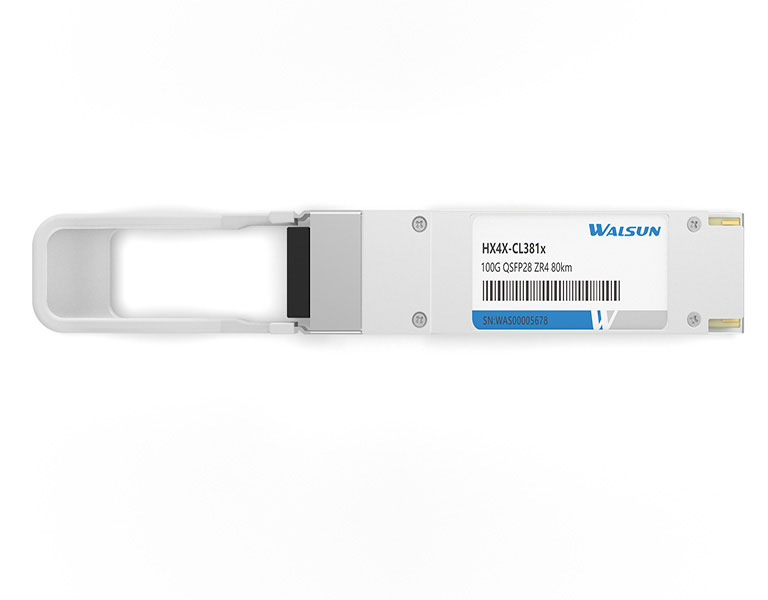

 Knowledge Base +
Knowledge Base +  2023.12.04
2023.12.04The range of a QSFP (Quad Small Form-factor Pluggable) transceiver can vary depending the type and model. However, typical ranges for QSFP modules are:
- For QSFP+ (40G) modules: up to 100 meters using multimode fiber, and up to 10 kilometers using single-mode fiber. - For QSFP28 (100G) modules: up to 100 meters using multimode fiber, and up to 10 kilometers using single-mode fiber.
It's important to note that the actual range may vary based on the specific specifications and standards of the QSFP module being used.

100G QSFP28 ZR4 80KM Optical Transceiver Modules
QSFP28 100G Module Standards
The 100G QSFP28 optical module standards are mainly defined by two key organizations, namely IEEE and Multi-Source Agreement (MSA). The QSFP28 SR4, QSFP28 LR4, QSFP28 ER4 are defined by the IEEE. How to clarify these three items from their names? The ‘QSFP’ means the form factor; ‘28’ represents that each lane has a maximum transmission rate of 28Gbps; ‘SR’ means short reach (100m), ‘LR’ is long reach (10km) and ‘ER’ is extended reach (40km). ‘4’ represents that the module has 4 lanes. For example, the QSFP28 LR4 means that it is a long-reach 100G module that can transmit 100G signals over four wavelengths with a transmission distance of 10km.
100GBASE-SR4 and 100GBASE-LR4 are the most commonly used 100G interface specifications defined by the IEEE. However, the transmission distance of QSFP28 SR4 is too short to meet all interconnection requirements and the cost of QSFP28 LR4 is too high for large data centers. Therefore, MSA brought a solution for mid-range connectivity to the market and defined the standards of QSFP28 PSM4 and CWDM4. Although the capability of QSFP 100G LR4 completely covers QSFP28 CWDM4, but the QSFP 100G CWDM4 solution is much cheaper and more competitive than QSFP28 LR4 in the scenario of 2km transmission.
QSFP 100G Laser Types
The laser plays an important role in the 100G QSFP28 optical transceivers which have five major types: VCSEL, FP, DFB, DML, and EML. Different types of lasers have different working wavelengths, modes and application environments.
| Laser Type | Wavelength | Working Mode | Application Scenario |
|---|---|---|---|
| VSCEL | 850nm | Surface Emitting | Within 200m |
| FP | 1310nm/1550nm | Edge Emitting | 500m-10km |
| DFB | 1310nm/1550nm | Edge Emitting | 40km |
| DML | 1310nm/1550nm | Direct Modulated | 500m-10km |
| EML | 1310nm/1550nm | Electro-absorption Modulated | 40km |
The VCSEL laser features a small size, low power consumption, easy integration, low price, and high coupling efficiency with multimode fibers, which is often used for QSFP28 SR4 modules.
The EML, with its small dispersion, large extinction and long-distance transmission, is designed to meet all those requirements for QSFP 100G LR4 and QSFP 100G ER4 transceivers.
The DML can realize signal modulation through the way of modulating the injection current of the laser. Thus, it is suitable for QSFP28 PSM4 and QSFP28 CWDM4 modules with a transmission distance of 500m or 2km.
Subscribe to the newsletter
for all the latest updates.
2-5# Building, Tongfuyu Industrial Zone, Aiqun Road, Shiyan Street, Baoan District, Shenzhen. China
